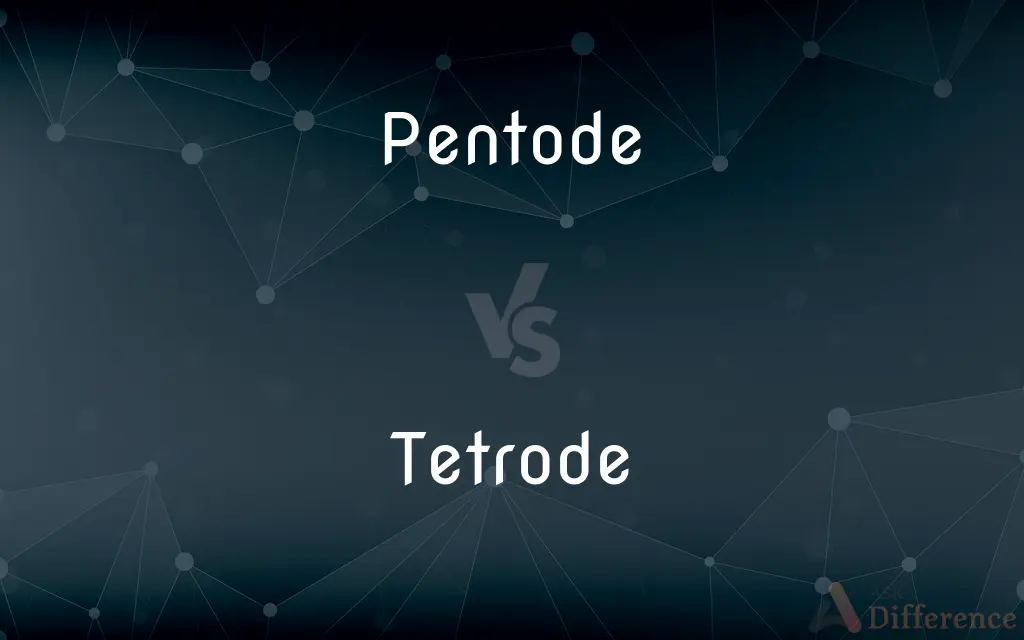Pentode vs. Tetrode — What's the Difference?

Difference Between Pentode and Tetrode
ADVERTISEMENT
Compare with Definitions
Pentode
A pentode is an electronic device having five active electrodes. The term most commonly applies to a three-grid amplifying vacuum tube (thermionic valve), which was invented by Gilles Holst and Bernhard D.H. Tellegen in 1926.
Tetrode
A tetrode is a vacuum tube (called valve in British English) having four active electrodes. The four electrodes in order from the centre are: a thermionic cathode, first and second grids and a plate (called anode in British English).
Pentode
A thermionic valve similar to a tetrode with the addition of a third grid, the suppressor grid to reduce the secondary emission effect; was/is used in high quality audio and radio products.
Tetrode
A four-element electron tube containing an anode, cathode, control grid, and additional electrode.
Pentode
A thermionic tube having five electrodes
ADVERTISEMENT
Tetrode
A thermionic valve similar to a triode with the addition of a screen grid to improve the thermionic emission.
Tetrode
A dynatron.
Tetrode
A dual-gate MOSFET.
Tetrode
A thermionic tube having four electrodes
Share Your Discovery

Previous Comparison
Lychee vs. Stone
Next Comparison
Conjuncture vs. Juncture













































